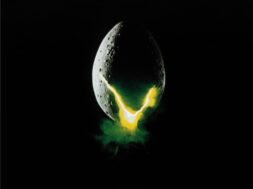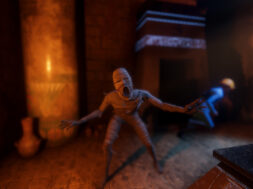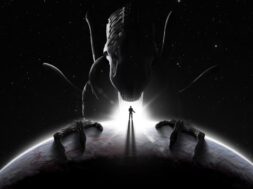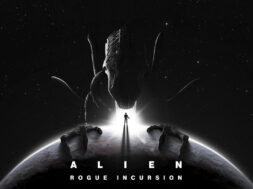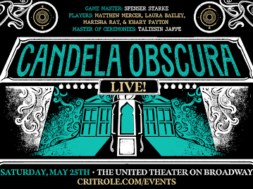The teaser for Luca Guadagnino’s Suspiria that dropped recently revealed a distinct departure from the vivid colored world of Dario Argento’s beloved supernatural classic. Color scheme aside, the teaser seems to be boldly declaring that this won’t be closely following the same beats of the 1977 film. While there are foundational plot elements in common, like the dance academy or that the narrative centers around dancer Susie Bannion (this time played by Dakota Johnson, and with different character spelling), the teaser gave a glimpse of a notebook with a particularly curious set of notes that gives an indication to the larger mythology that may be at play; the Three Mothers.
While waiting to see what kind of madness Guadagnino’s film has in store come November and the potential for a new trilogy based on the Three Mothers, I revisited Argento’s original trilogy to reexamine the lore behind his trio of fearsome witches.

The Three Mothers are a triad of evil, powerful witches stationed across the world to manipulate humanity on a global scale. Argento drew inspiration and the concept from Thomas De Quincey’s collection of psychological fantasy essays Suspiria de Profundis, or more specifically a section titled “Levana and Our Ladies of Sorrow,” where De Quincey envisions three companions for the Roman goddess of childbirth; Mater Lachrymarum (Our Lady of Tears), Mater Suspiriorum (Our Lady of Sighs), and Mater Tenebrarum (Our Lady of Darkness). Argento took the idea and spun it into a supernatural horror trilogy, each Mother a powerful witch receiving her own film. He also drew inspiration from his grandmother, who claimed to have fled a German music academy due to actual practicing witches that were there.
Suspiria – Mater Suspiriorum

Easily Argento’s most recognized and most beloved film, Suspiria stars Jessica Harper as Suzy Bannion, an American ballet student who transfers to a prestigious dance academy in Freiburg, Germany, and soon discovers a supernatural conspiracy amidst a string of brutal murders. Aside from the stunning vibrant colors and a progressive rock score by Goblin, Argento cleverly borrows from giallo tropes before ripping the rug out from viewers with the reveal of witchcraft.
The witch responsible for the brutal, extravagantly staged deaths in the film is the Mother of Sighs, or Mater Suspiriorum. The oldest and wisest of the Three Mothers, she remains unseen for most of the film, hidden behind a secret passage underneath the dance academy and further concealed by her coven. The final showdown between Suzy and the Mother of Sighs, given name Helena Markos, was a terrifying battle as the witch reanimated Suzy’s dead friend Sara to attack. Suzy successfully kills the Mother of Sighs, causing the dance academy to burn to the ground and her coven dying with it.
Inferno – Mater Tenebrarum

An underrated, thematic sequel to Suspiria sees its protagonist square off against the youngest and cruelest of the Three Mothers. While the colors are still present (but not nearly as intense) and the score more delicate than that of Suspiria, Argento enlisted his mentor Mario Bava for some of the effects, matte paintings, and trick shots for the film. Bava, and his son Lamberto, worked as second unit director and assistant director, respectively, picking up the reins when Argento was too ill, suffering from a severe case of hepatitis at the time. The exquisite underwater sequence near the beginning of the film can be attributed, at least in part, to Bava; this remarkable scene alone makes the film worth watching. The intense pain and suffering that Argento endured during production dampened his memories of the film; he’s cited Inferno among his least favorite works.

While the main antagonist of the film is Mater Tenebrarum, or Mother of Darkness, she’s not the only Mother in Inferno. When Rose Elliot stumbles upon an ancient book by E. Varelli that tells of his building the three homes of the Three Mothers, she realizes she’s living in the New York building belonging to one of them. She writes to her brother Mark, back in Rome, begging him to visit. Before he can read her letter, he’s distracted in class by a beautiful student, which turns out to be Mater Lachrymarum, the most beautiful and powerful of the Three Mothers. But this is Mater Tenebrarum’s movie, and Mark does eventually make his way to New York to find his sister. Of the three witches, Mater Tenebrarum’s death proves to be the most anticlimactic; after her identity is finally revealed and she turns into death personified, she passively perishes in the flames of her burning building.
The Mother of Tears – Mater Lachrymarum

Nearly 30 years after Inferno saw limited release, the conclusion of the Three Mothers trilogy finally arrived in 2007. Its modern style and aesthetic bears little resemblance to its thematic siblings, only the mythology serving as connective tissue. It’s also by far the more violent and gruesome, especially when watching the unrated cut. Visceral deaths of babies and children illustrate that this mother may be far crueler than her youngest sister.
The Mother of Tears closes the loop, reconnecting to the first film by introducing the protagonist as the daughter of a powerful white witch that fought and weakened Mater Suspiriorum prior to the events of Suspiria. That daughter, Sarah (Asia Argento) is guided by the ghost of her mother while Mater Lachrymarum grows exponentially more powerful with the unearthing of her magic cloak thanks to the Catholic Church. With widespread violence erupting across Rome, where this Mother is based, and the ever-increasing number of coven members closing in on Sarah, Argento does succeed in demonstrating that this Mother is the most powerful. As such, it builds to one of the more thrilling climaxes, with Sarah underground in the thick of the cannibalistic coven surrounding Mater Lachrymarum for one hellish showdown.

As the furthest removed from Suspiria both in look and in date, The Mother of Tears is the worst received of the trilogy. It’s also the most daring in violence, gore, and nudity. From a mythology standpoint, the final entry is faithful to the story of the Three Mothers.
Each of the witches were powerful and varied in their skills, yet all three were tethered to their specific architecture. Save for Suzy Bannion killing Mater Suspiriorum directly, the subsequent Mothers were destroyed by proxy of destroying their enchanted homes, or their objects of power. Argento created interesting supernatural lore and saw it through its completion, even if it took him three decades to finish.
That said, there’s a lot that could potentially be improved with the new reboot. After Suzy, the subsequent protagonists weren’t as developed, and the witches themselves were often built up to be horrific and fierce only to defeated fairly easily. Even still, it’s a trilogy worth revisiting.

